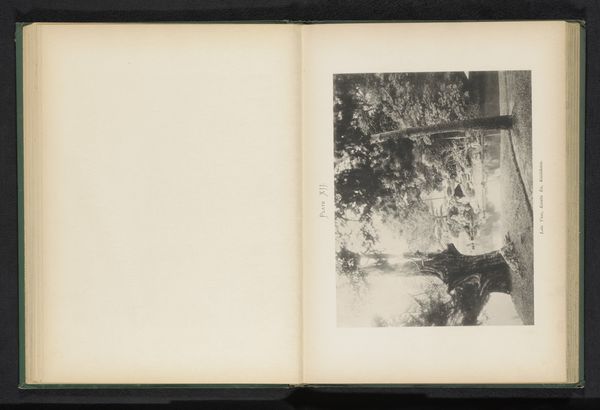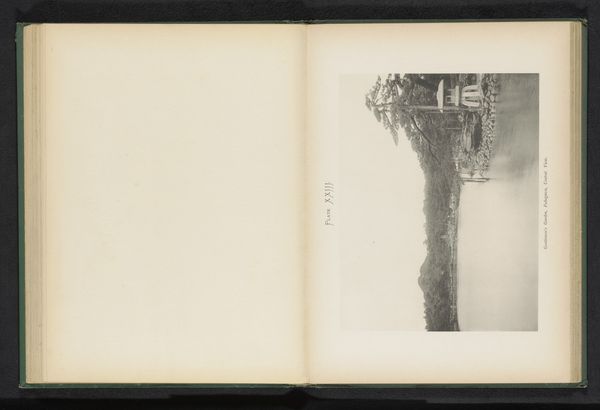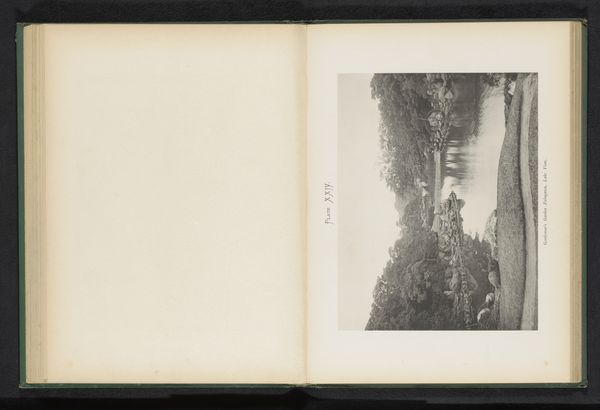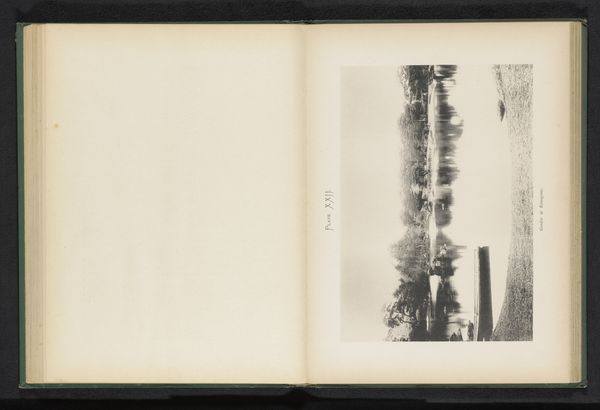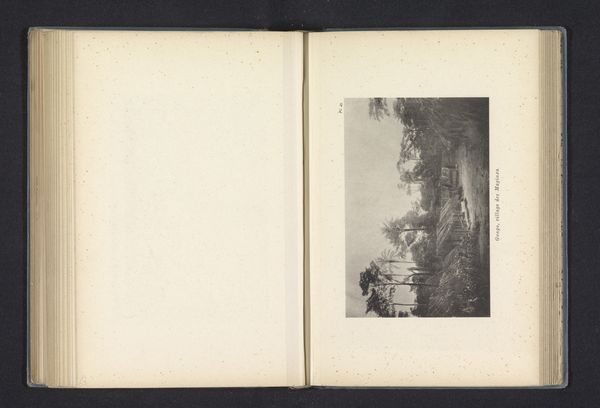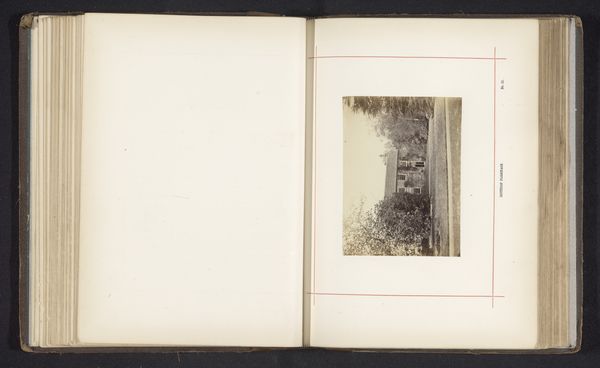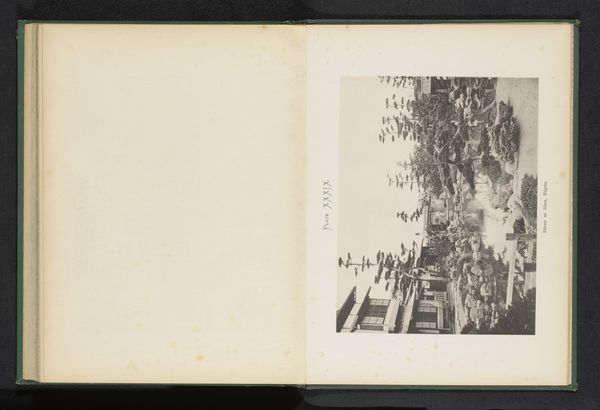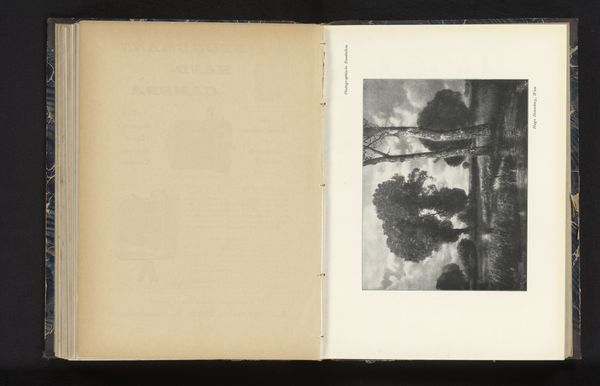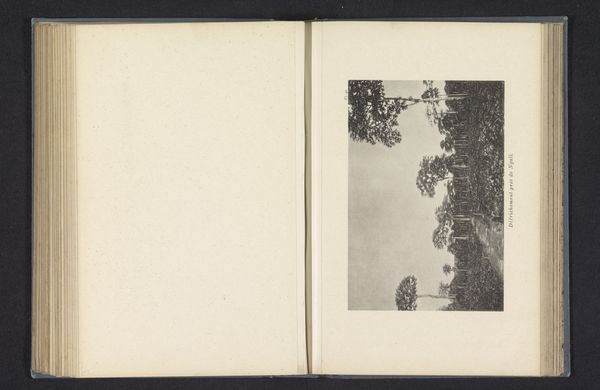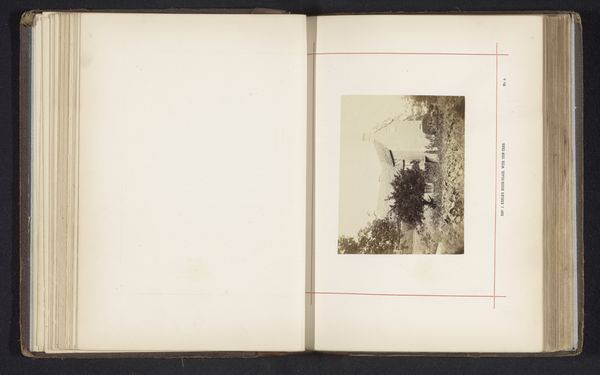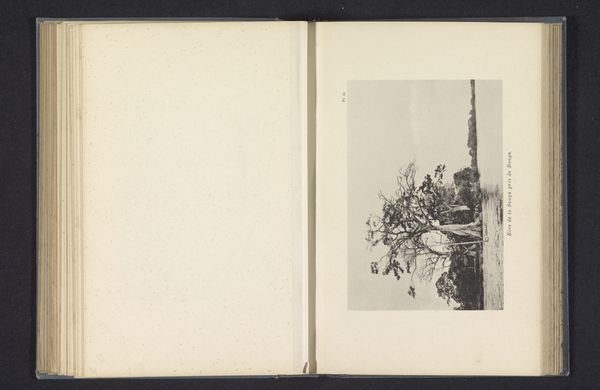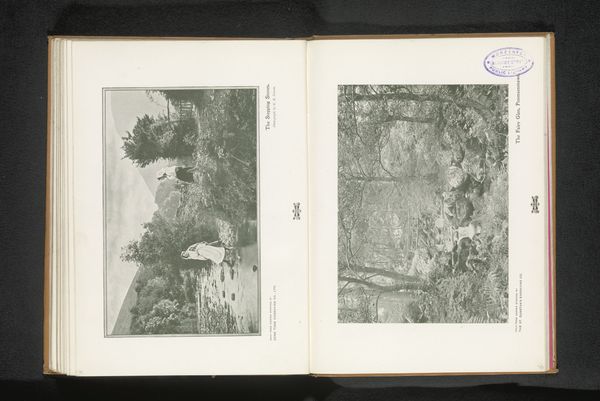
Dimensions: height 196 mm, width 254 mm
Copyright: Rijks Museum: Open Domain
This photograph of the Koraku-en gardens in Okayama, Japan, was captured by Kazumasa Ogawa, a pioneer of photography and photomechanical printing in Japan. Ogawa harnessed the innovative collotype printing process, which uses a glass plate coated with gelatin, exposed to light under a photographic negative. The gelatin hardens in proportion to the amount of light it receives, creating a printing surface that holds ink in varying degrees. The result is a print with a continuous tone, similar to a photograph. This meticulous process, however, demands skilled labor. Each print requires careful inking and multiple passes through a press, making mass production difficult. The labor intensive nature of collotype printing meant that it existed at odds with the rise of industrial printing techniques. Yet, the rich tonal range and unique character of each print offer a tactile, handcrafted quality rarely found in modern mass-produced imagery. Photographs like this remind us that even in the age of mechanical reproduction, the hand remains present, shaping the final outcome. It calls us to appreciate both the image, and the means of its making.
Comments
No comments
Be the first to comment and join the conversation on the ultimate creative platform.
